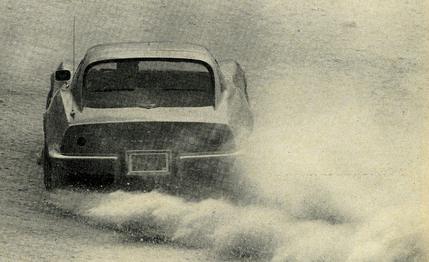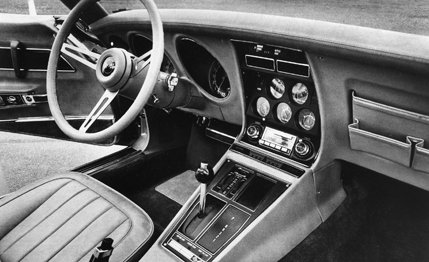 Archived Road Test
Archived Road Test
Another Corvette road test? One more plunge into the verbal thicket in an attempt to describe the exact sensation in the region of the fourth pelvic vertebrae when the throttle is punched on a 427-cu. in., 435-horsepower Stingray? More open combat with similes and metaphors for the sake of establishing the fact that the Corvette is a very rapid and exciting automobile—already an article of faith among the entire population, including pre-pubescent schoolgirls? Let's dispense with all that.
If we are going to discuss the Corvette at all, let's accept a dozen premises in its behalf and hopefully avoid traveling the same old paragraphs to the same old conclusions:
(1) The Corvette is surely the most popular high-performance sports car ever built, with something in the neighborhood of 250,000 examples having been sold since it was introduced in September, 1963.
(2) It is available with a variety of powertrain options, from the popular 350 cu. in., 300-hp "small engine" versions (which account for over 60% of sales) to the blockbuster 427 cu. in. units with outputs ranging from 390 to 435 horsepower, depending on which of the five optional setups is chosen.
(3) The small-engine Corvettes are marginally faster and extraordinarily civilized.
(4) The large-engine Corvettes are extraordinarily fast and marginally civilized.

(5) Corvette bodies are fiberglass, and rather heavy, somewhat noisy and tend to be expensive to repair. Corvette paintwork has a poor reputation for checking on the convex fiberglass surfaces, and the material will fracture and tear under impact. It is, however, difficult to dent and impervious to salt and other corrosive agents.
(6) Corvettes have never been totally accepted by the sports car purists, despite the fact that they will outperform—in a total sense—most of the sacred cows produced in Europe. In fact, if the Corvette was built by the dozens in the small factory in northern Italy, the same fetishists would acclaim it as one of the great automobiles of all time. However, it is dogma within this small but vocal claque that Detroit is incapable of producing automobiles that corner, brake and steer properly and the Corvette is doomed by its origins.
(7) The Corvette has an extremely loyal body of owners—probably the largest and most enthusiastic group of its type in the world. They are breathless supporters of their chosen car. Over 7000 members belong to Corvette clubs and, shades of 1952, they wave at each other when meeting on the highway! The monthly Corvette News, published by Chevrolet, has a circulation of 102,000, more than a number of general interest automotive magazines.
(8) Corvettes are at the peak of the performance car pecking order. Among the vast underground of street racers that total millions across this land, the man in the 'Vette is king—especially the man with the number "427" displayed on his machine's hood. In fact, more "427" badges are sold than engines—as was the case with the legendary fuel-injection Corvette engines that were discontinued in 1965. In those days, the arcane little emblem that denoted a "fuelie" was the most popular bit in the Corvette parts bin. Within the subculture of drag racers and teenie throttle-stompers, the Corvette means instant status. In fact, sales surveys indicate that a growing majority of Corvette buyers are under-25, blue-collar types making less than $10,000 per year. Curiously, the next largest segment of buyers is over-50, white-collar men who earn over $15,000 per year.